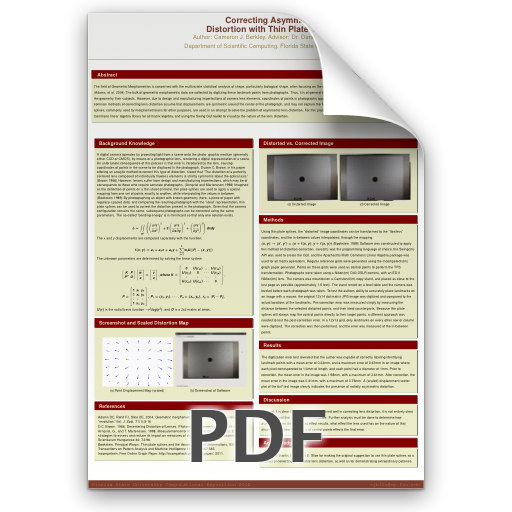
Correcting Asymmetric Lens Distortion with Thin Plate Splines
Abstract
The field of Geometric Morphometrics is concerned with the multivariate statistical analysis of shape, particularly biological shape, often focusing on the coordinates of meaningful landmarks located on specimens. (Adams, et al. 2004) The bulk of geometric morphometric data are collected by digitizing these landmark points from photographs. Thus, it is of general interest to morphometricians that photographs reflect accurately the geometry their subjects. However, due to design and manufacturing imperfections of camera lens elements, coordinates of points in photographs appear displaced from the desired rectilinear projection. Many common methods of correcting lens distortion assume that displacements are symmetric around the center of the photograph, and may not capture the full nature of the distortion. Here, Fred Bookstein’s thin plate splines, commonly used by morphometricians for other purposes, are used in an attempt to solve the problem of asymmetric lens distortion. For this project, software was constructed in Java, using the Apache Math Commons linear algebra library for all matrix algebra, and using the Swing GUI toolkit to visualize the nature of the lens distortion.

